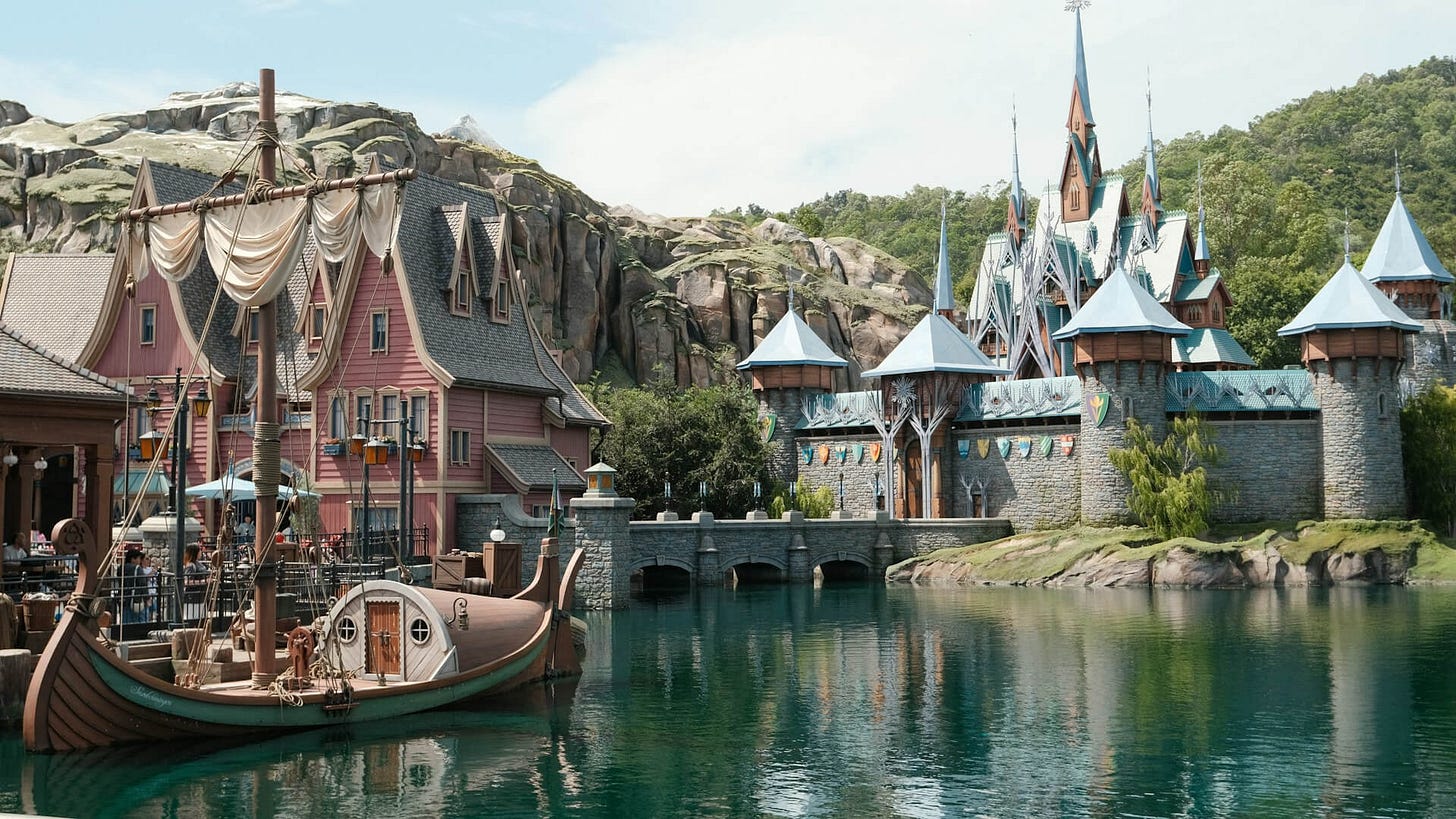Note: this is part 4 of a series. It makes sense on its own, but is better if you read the rest of the series first. Start with Part 1 – Creating Your City.
Okay, here’s the last part of the series. So far we’ve built our city piece by piece:
We started with our concept, then we added landmarks to reinforce the concept and give the characters places to investigate.
We created NPCs to represent the personality of the city to the players and offer story hooks.
We built factions to give the NPCs purpose and offer even more hooks.
Through it all, we’ve been seeding the city with both Hidden and Secret Information to reward players for role-playing and succeeding on dice rolls.
We made each element short and usable. Just 2–3 sentences and a handful of bullet points.
Now the big question: how do we use all of this at the table?
Set the Scene
Start strong. When the characters first arrive in your city, describe what they see, hear and feel. Give them a sense of the major landmarks, the atmosphere and the big event that’s affecting everything.
If there’s a festival happening, mention the banners, crowds and music. If there’s a crackdown on crime, describe the nervous glances and heavy guard presence. Describe the characters’ own situation that brought them here and the landmarks they can see.
You don’t need to go into a lot of detail. Just share enough to give them options and entice them to explore.
Example: Arriving in Taremu
“This port is the most crowded one you’ve ever seen. There are ships and people from every kingdom you’ve ever been to, and many you haven’t. You barely manage to find a place to dock. There must be a score of shipwrights here who can repair your hull.
In the center of the city you see a massive red pyramid with a shining gold top. Steam rises against the Shardspire peaks to the west. A gleaming white colosseum erupts with jets of fire between you and the pyramid. A giant waterwheel turns lazily next to rise of golden manors to the east.
Music fills the cool salt air from every direction and hundreds of red banners flap in the breeze.”
Follow the Players’ Lead
After setting the scene, ask the classic question: “what do you do?”
Whatever the players choose will be your guide. When they pick a direction, fill it with the NPCs, factions and story hooks you’ve already built.
Example Leads in Taremu
The pirate bard sees the red pyramid and says “I bet there’s something worth stealing there.” She’ll run into her old friend Mivven Bes, who will pitch the heist for getting the Emberleaf Codex from the Eyes of the Golden Sun.
The monster hunter wants to go to the colosseum. He’ll meet Captain Zahotep, who will recommend entering the tournament. If the players spend enough time with Zahotep, they might find out about Hashmetta’s missing beer or help guard the visiting Sobek priest.
Whatever they choose, you have material prepared to make this city come alive. You can give them exactly the adventure they want by responding to the choices they make.
Place Encounters Between Landmarks
Your city will feel bigger and more alive if there’s space between the major locations. You can show this by adding small encounters as players travel from one place to another.
I adopted this technique from Pointy Hat (video linked below) and it’s really helped make my cities more interesting.
The further the characters have to travel, the more encounters they will have:
Close: They arrive right away. No encounters.
Near: They arrive after one encounter.
Far: Two encounters.
Very Far: Three encounters.
These encounters don’t have to be a full scene. Some will just be interesting sights or little moments. Others might include minor NPCs, side quests or story hooks.
Once again, follow the players’ lead. The more interested they are in an encounter, the deeper it can go.
Example Encounters in Taremu
On the way to the arena, the characters find a crying child lost in the festival crowd. Helping them is simple, but later they might find out the child’s parent is someone important.
On the way to the pyramid the party discovers a hidden shrine. The monk leaves an offering and receives a blessing that reveals itself later.
If the group is in a rush or uninterested you can always skip these encounters and jump right to their destination. They’re meant to add something to the session, not slow things down.

Prepare for Chaos
No matter how much you prepare, players will occasionally go so far off-script that nothing you’ve prepared fits their choices. For those moments, have a few spark tables ready. They will help you improvise NPCs, locations and events that still feel like part of your city.
I like to use d666 or “dDevil” tables. Roll 3d6 (one die for each column) and combine the results. I usually have 2 or 3 options for each result to help spark my creativity.
Note that “Lionfolk” is always an option. It’s their city, after all.
Roll: Public Figure, Ritual, Somber
The characters stumble onto a funeral procession for a beloved local priest.
Roll: Animal, Crime, Chaotic
A monkey snatches a necklace from a merchant, who starts yelling for help.
These tables are also useful for the previous city creation steps.
Reuse and Recycle
Some of your prep won’t hit the table, but you don’t have to waste it. If the characters skip an NPC or story hook, just save it for later. Make adjustments if needed and then put them in a different city. Or make sure the characters have a reason to come back and save your material for then.
And that’s it! That’s the end of the series. This is how I created a city for my players to visit, added secrets and stories, and started running it at my table. I wanted to keep my notes short but full of interesting choices and I think I accomplished that. Hopefully this will help someone else do the same.
Other Thoughts
Justin Alexander advises Don’t Prep Plots. If you understand the situation and what will happen if the characters don’t intervene than you are ready for whatever they will do.
Deficient Master uses his Law of Narrative Influence to set up the situation and the character’s initial path but is still ready for them to do the unexpected:
Pointy Hat’s method for handling travel in RPGs was meant for wilderness travel but works really well for cities too:
Baron de Ropp uses landmarks to give players meaningful choices, then introduces dDevil tables to keep prep easy:
Murkdice has in-depth tables for generating NPCs if you want more options than my dDevil tables can support:



